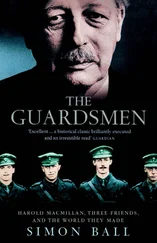Banks arranged the necessary paperwork.[80] A set of instructions (now sadly lost) was drafted, and letters of introduction from the Duke of Portland, the then Home Secretary, to the several governors in the British part of North America (Lower Canada, New Brunswick and Nova Scotia) were drawn up in case Masson ventured into these jurisdictions. A few days later, Rufus King, the American Ambassador in London, provided letters of introduction for his new country, the United States, giving Masson a clear run to venture wherever his collecting instincts took him, even down the Mississippi River.
The canvas was enormous. Masson decided to start at New York and proceed from there, but the voyage there did not start well.[81] He left Gravesend in September 1797. Somewhere in the Atlantic near the Azores, the ship was intercepted by a French privateer, then shot at by a French pirate ship, which then took and kept the ship: Masson and several crew were put on a ship heading for Baltimore and then transferred to another ship which finally landed them at New Haven, Connecticut.
Masson arrived in New York during the final week of 1797, after a gruelling four months at sea.[82] He spent the winter in New York and then in the spring of 1798, following Banks’s instructions, he worked his way up the Hudson and the Mohawk River until he reached the American settlement of Oswego on the south shore of Lake Ontario. He was heading westward along the southern shore of the lake, for Niagara, in Upper Canada, one of the first places to be settled by those British colonists who had remained loyal to the Crown during the American revolution.[83] Masson arrived at the small town, which had at the beginning of July lost its status as Upper Canada’s capital to the town of York (soon to be renamed Toronto), directly opposite on the north shore of Lake Ontario. He botanised in the area but stayed in nearby Queenstown in the house of a ‘Mr Hamilton’ (Robert Hamilton, merchant and judge) who took him in as his guest because ‘being a new place there was no decent lodging to be got’.[84] Masson wanted to travel to Detroit, at the western end of Lake Erie, but got no further than Fort Erie at its eastern end where he waited in vain for favourable winds to take him down the lake. Summer was quickly drawing to an end. He took the boxes of seeds he had collected and made his way across Lake Ontario to York and from there eastward to the much larger, older and more-established town of Montreal, in Lower Canada, where he arrived on 16 October 1798.[85]
Within a day or so of arriving, Masson learned that a vessel was ready to sail to Quebec, further down the St Lawrence River and, from there, he hoped to find another one scheduled to cross the Atlantic to Europe. It was probably his last chance to send samples of his collecting activities before winter set in and the ports froze. Masson sent a box of plants and a bag of ‘Zizania’, wild rice, especially for Banks.[86]
For the next few years, Montreal was Masson’s base. It was a good choice. Not only did it send shipping to England either directly or by way of Quebec, but it was the headquarters of the North West Company, a fur trading business founded some fifteen years before Masson’s arrival by a group of enterprising Scots living in Montreal.[87] Each year some of the partners fanned out into what is now western Canada from their wintering base at Grand Portage (now in northern Minnesota), on Lake Superior, in search of beaver, and then in July they would return to their base where the partners from Montreal would be waiting for them to freight the cargo of furs back to the St Lawrence River.[88] Masson hoped to take advantage of this arrangement for his botanical purposes.
His hopes were realised.[89] During the summer of 1799, he travelled with the Montreal partners through southern Ontario to Georgian Bay, Lake Huron and finally Lake Superior to Grand Portage, Upper Canada, where the two sets of partners met. Here and on his travels Masson collected more than one hundred different varieties of seed. For his return trip to Montreal, he went back to Niagara where he collected examples of living plants, in order to send them to Banks from Quebec before winter closed in again.
In the following summer, Masson wanted to travel to Pittsburgh by way of Lake Erie but for some reason this did not happen.[90] Instead he returned to the northern Great Lakes and came back with another collection of living plants, including purple trillium.[91]
From what we can gather, Banks appeared to have been pleased with the collections he had received from Masson since his arrival in North America.[92] But then, two years later, Banks’s attitude to Masson appeared to have changed significantly. On 2 February 1802, Banks wrote to him saying that his collections had become disappointing, and that he was not venturing far enough to find new species. Banks had by then already received several hundred specimens, but many of them were not new.[93]
Then there is a three-year gap in the surviving records. It seems there must have been some discussion of Masson returning to London but he was intent on staying, remarking that he was in very good health and was hoping to travel further down the Gulf of St Lawrence to collect.[94] This was in May 1805.
By the end of the summer, Masson was clear that he was being recalled and though he continued collecting, including living plants during the summer, he did not seem to be disappointed to be leaving.[95] He intended to spend the winter in Montreal and then make his way home via New York in the following spring.
In the event, Masson did not come home. He died in Montreal on 23 December 1805 aged sixty-four. According to John Gray, a friend who was a Montreal attorney and merchant, with very close ties to the North West Company, Masson left few possessions: clothing, especially for the winter months, two maps, two journals, a few drawings, a tea pot and caddy. Gray specifically noted that alongside a small number of authoritative, Linnaean, botanical texts, was a copy, no doubt well-thumbed and annotated, of William Aiton’s Hortus Kewensis , published sixteen years before, which told Masson precisely which plants were growing in the royal gardens.[96]
Masson went further and collected more, and over a longer period of time (thirty years) than any other collector associated with Banks. Much of what he did was on his own initiative. Banks described him as ‘indefatigable’: no one who met Masson had a bad word to say about him.
2
1779: Return to Botany Bay by Way of Southwest Africa
As Banks sifted through the vast collections made during the Endeavour ’s Pacific voyage, several thousand specimens in all, he would have been reminded of the time he had spent in New Holland, at Botany Bay, and on the Endeavour River, in the period from late April to early August 1770, but few other people were interested. New Holland hardly got a mention in the press and when it did it was described as a hostile place, unlike Tahiti, which was described as paradise.[1]
More information about New Holland became available at the end of September 1771, a little over two months after the return of the Endeavour , when an anonymous publication, A Journal of a Voyage Around the World , appeared in London, and told the story of Cook’s three-year voyage. In it New Holland came across as a very disagreeable place.[2] John Hawkesworth’s officially sanctioned publication in 1773, of what he called ‘Lieutenants Cook’s Voyage Round the World’, devoted many more pages to New Holland than the earlier publication: it painted a much more attractive picture of the country’s resources, but, it, too, had little positive to say of its inhabitants.[3] Two days later, the journal of Sydney Parkinson, the Endeavour ’s artist, who had died on 26 January 1771 (as the ship was making its way back from Batavia to the Cape of Good Hope), was published – and it confirmed most of the previous descriptions.[4]
Читать дальше












